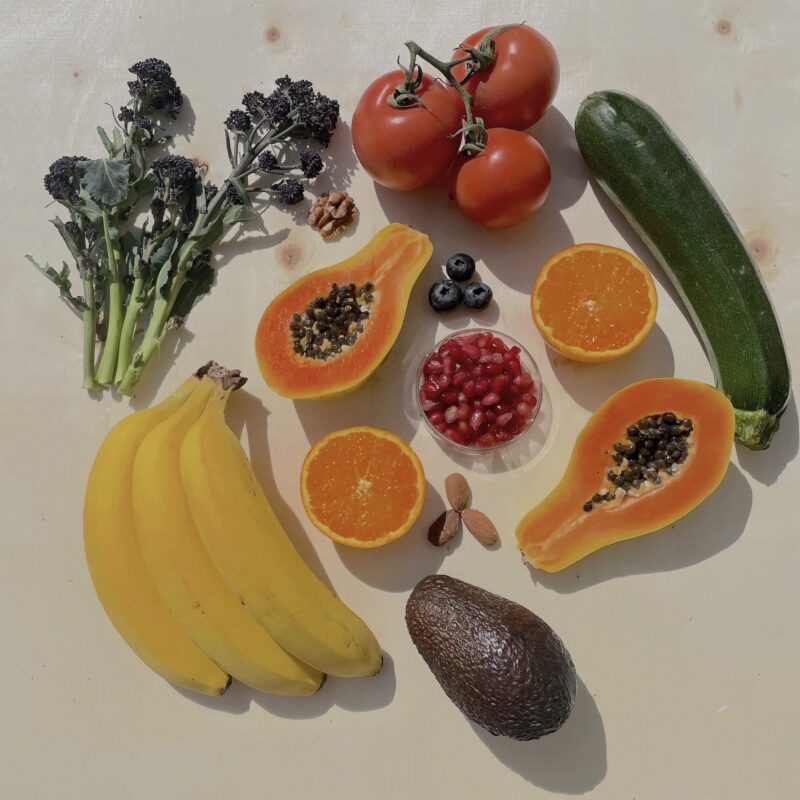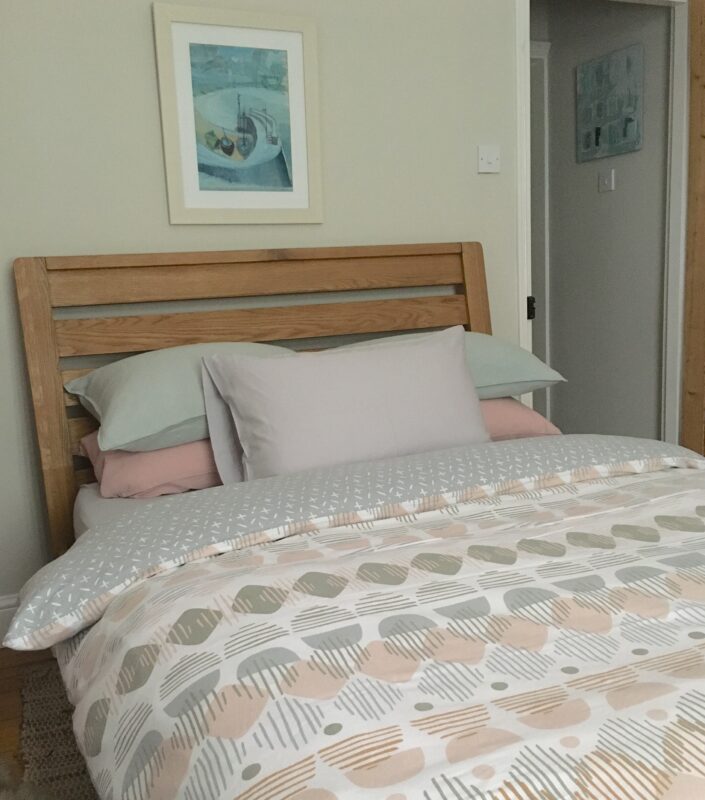When I began looking into the potential causes of rosacea, I never imagined that something so superficial looking (and medically treated as a dermatological condition) could turn out to be so in-depth and interlinked with different parts of our physiological makeup. Looking beyond the surface when it comes to rosacea allows for a deeper understanding of potential contributory causes and factors to its development. This post will look at the immune system and how it can potentially influence rosacea, in addition to covering how one can support their immune system, which can improve rosacea symptoms.
Breaking Down the Immune System
As chronic inflammation appears to be at the root of rosacea, there are many intricate immune processes that all have a role to play in the condition. Studies have suggested that rosacea causes are due to an abnormal innate immune response (which refers to the immune system you were born with). The innate immune system involves many protective aspects, from the skin and stomach acid to the cough reflex, all of which (and others included) act as a barrier from external threats such as viruses, bacteria, toxins and any other foreign entities. In addition to the physical barriers, innate immunity is present in chemical form, known as “innate humoral immunity“. Physiological chemicals such as ‘interferon’ and ‘interleukin-1’ also form part of innate immunity. A persistently abnormal immune response leads to the characteristic inflammation and facial redness associated with rosacea. For more information on the immune system, please read this article.
Cytokines are a family of proteins, which all play an integral part in the immune system. Cell activation is regulated by cytokine receptor signalling, as is the movement of leukocytes (white blood cells). Leukocytes are a rich source of cytokine expression. Structural cells may also produce and store significant amounts of cytokines. On the other hand, chemokines are not dissimilar from cytokines in that they are composed of proteins that regulate the trafficking of leukocytes.

What Is the Relationship Between the Immune System and Rosacea?
Although there have not been many studies conducted on the involvement of cytokines and chemokines in rosacea, these interlinked cellular processes occurring within the immune system are said to be to blame for the symptoms. For in-depth information on the cytokine and chemokine network in rosacea, see this link. Cytokines and chemokines trigger an inflammatory response, which results in the activation of various cells associated with leukocytes (white blood cells), causing rosacea symptoms.
One other notable link between the immune system and rosacea is the role of neutrophils, which is a type of white blood cell, with their primary function acting as protection against infection. As inflammation is considered the underlying mechanism behind rosacea, the interrelationship between the vascular and immune system is regarded as a factor in the development of the skin condition, and the inflammatory nature of neutrophils also plays a role. More specifically, rosacea could be due to an inflammatory process known as ‘neutrophilic dermatosis’. This finding supports the theory that altering the function of neutrophils (i.e. reducing inflammation) is key to improving rosacea.

The Inflammatory Process
Environmental triggers, such as exposure to UV radiation, spicy food, stress and temperature fluctuations, influence the expression of various immune system components, for example, cytokines and chemokines.
Toll-like receptors (TLRs) play a central role in the inflammatory processes behind rosacea and are a family of proteins integral to the innate immune system. The activation of toll-like receptors results in a whole host of cellular activity, which includes the secretion of antimicrobial peptides and the production of inflammatory-inducing cytokines and chemokines. Notably, toll-like receptor 2 (TLR2) is associated with the physiological mechanisms of rosacea as sufferers have an altered TLR2 expression, which makes one more susceptible to innate immune stimuli. In rosacea, the activation of TLR2 results in abnormally increased levels of antimicrobial peptide ‘cathelicidin’. Excessive quantities of cathelicidins exist in the skin of rosacea sufferers, linked to the inflammation associated with the condition. For further information on interleukins and rosacea, this article is available.
Given the inflammatory pathways are so complex, I came across an article that concisely breaks down the process into understandable sections found here. To summarise, the primary sources of inflammation at the root of rosacea involve:
- Vasodilation: the widening of blood vessels causes the characteristic flushing and skin redness observed in rosacea.
- Movement of Leukocytes: the leaking of leukocytes into the facial skin causes the sensation of warmth and heat, often experienced in rosacea. Papules and pustules are also caused by the leukocytes leaching into the skin.
- Higher permeability of the vascular system: this is where blood vessels are more susceptible to increased blood flow. This process includes the infiltration of inflammatory proteins.
Scientists have discovered a specific and significant route of inflammation in terms of future rosacea treatment. This so-called ‘missing link’ between triggers and inflammation associated with rosacea is a type of cell known as “mast cells”. The study, funded by the National Rosacea Society, can be found here. As the topic of mast cells is so relevant and precise in terms of the underlying cellular mechanisms of rosacea, the next article will cover this topic.
The ultimate question is what triggers this cascade of inflammation in the first place, causing rosacea? The debate continues as to whether it is due to genetics, environment, an invading pathogen, undiagnosed allergies, a reaction to topical agents, or a combination of all factors mentioned. Again, this article raises the question of what may kick-start the inflammatory process in the first place.

Diagnostic Markers of Inflammation
The most effective and accurate method to measure internal inflammation is by looking at a biological marker known as ‘C-Reactive Protein’ (CRP). The production and secretion of C-reactive protein in the liver occur in response to high levels of inflammation, measured via a blood test. Having an elevated level of CRP can be due to many inflammatory conditions, from infections to cardiovascular problems, even acting as a predictor of future health issues, for example, risk of heart disease or stroke. For more information on CRP, see this link.
Given I was experiencing a variety of symptoms, aside from rosacea, I had my C-reactive protein levels checked to ascertain if there was any underlying inflammation in the form of an autoimmune condition. Fortunately, my CRP levels came back as ‘normal’.
Lifestyle Factors Contributing Towards Inflammation
Numerous lifestyle factors can singularly (and collectively) contribute towards inflammation, which in turn can exacerbate skin conditions like rosacea. These include:
- Dietary: inflammatory foods such as processed foods, high-fat, red meat, dairy products and fried foods.
- Lack of exercise: sedentary lifestyles result in greater levels of internal inflammation.
- Being overweight: in addition to storing excess levels of fat, fat cells themselves produce inflammatory chemicals.
- Poor sleep: sleep deprivation can exacerbate inflammation as many reparative bodily processes take place overnight.
- Smoking: inhaling directly or being passively exposed to cigarette smoke increases inflammation.
- Stress: Stress can affect the body’s ability to utilise cortisol effectively to keep inflammation under control.
How to Decrease Inflammation
By altering a variety of lifestyle factors, it is possible to reduce internal inflammation. These changes not only positively affect rosacea but also overall health. Alterations include:
- Including antioxidant-rich vegetables and fruits in one’s diet, for example, leafy greens and berries. Replacing saturated fats with healthier alternatives such as olive oil is another beneficial change. In terms of protein, cold-water fish such as salmon and mackerel are rich in omega-3. As for meat, switching to lean sources such as chicken or turkey is a favourable swap from red meat. Of course, there are other protein sources such as Tofu (if you prefer vegan alternatives).
- Increasing physical activity levels has been shown to reduce inflammatory markers (C-reactive protein and interleukin-6).
- By shedding excess body weight, fat cell numbers decline, causing decreased levels of inflammation. Fat cells themselves produce pro-inflammatory cytokines (hence fewer fat cells equals lower levels of inflammation).
- Stress reduction can allow the body to use cortisol more efficiently, which is highly beneficial for inflammation.

Personally, the most effective methods of treating my symptoms have been through reducing inflammation, attained by altering many lifestyle factors and lessening my exposure to toxins by using natural and organic alternatives. These changes have included:
- A well-balanced diet, consuming organic and fresh produce, wherever possible. Initially, I cut dairy, gluten and high histamine foods from my diet but have since reintroduced them, with no worsening of rosacea.
- By partaking in regular exercise, physiological benefits are attainable, as is stress reduction and enhanced mental well-being.
- Maintaining a regular sleep pattern, where I go to bed around 10 pm and wake up without an alarm at around 6.30 am (although this is earlier during the summer months). My ideal sleep duration is seven and a half hours per night.
- Trying not to let stress take over: of course, life has its stressors in various forms, but it is vital to remain centred. I find during stressful times, taking a walk in nature, a warm bath with lavender salts, a nutritious meal, meditation, and a decent night’s sleep as effective methods to de-stress.
- Maintaining positive relationships and interactions, reducing negative ones where possible: there is no doubt that the people we surround ourselves with (and consequently their energy) can impact our stress levels. As a sensitive person, I believe one is more susceptible to other people’s moods, emotions and vibes. This desire for calmness extends to my surroundings, which is why I prioritise organisation and creating a calming atmosphere whilst being mindful of interior design, which further enhances feelings of positive well-being and reduced stress.
Calming an Over-reactive Immune System Helps Reduce Inflammation from the Core
Given that a potential over-reactive response of the immune system may be partially to blame for rosacea, how does one calm this response?
Nutrition has a substantial impact on inflammation and, subsequently, the immune system. In addition to the anti-inflammatory foods, there are additional herbs and spices, which can offer benefits, helping to target inflammation. The key ones include ginger, garlic, turmeric, cinnamon and black pepper.
Keeping stress levels to a minimum is also said to be an effective method of reducing inflammation and, in turn, calming down a hyperactive immune response. As rosacea (among many other skin conditions) is related to the over-production and disproportionate release of inflammatory chemicals, stress can cause your immune system to go into overdrive, worsening symptoms. De-stressing is not the only method by which to calm an overreactive immune system to improve rosacea symptoms. Based on my experiences, a multifaceted approach is the most effective way to reduce inflammation, skin complaints and overall health. For more information on how stress impacts the skin, see this article.
In addition, there is a brilliant article surrounding the topic of inflammation and how to calm down an overreactive immune system.

How Do Dietary Changes Reduce Inflammation and an Overreactive Immune Response?
Although the specific food groups mentioned above have a positive impact on inflammation, what are the mechanisms behind such beneficial changes?
Antioxidants are incredibly effective at reducing chronic inflammation (considered to be at the core of rosacea) and are attributed to an overly sensitive immune system. Our bodies are exposed to an array of toxins and stressors daily, heightening free radicals, which is something one needs to ensure does not get out of control. Free radicals are Antioxidant-rich sources, which help fight free radicals by reversing their damaging effects on mitochondria and improving mitochondrial health. For more detailed information on antioxidants and their powerful properties, see this article.
Flavonoids are naturally occurring compounds; and are present in several plant-based foods such as fruits, vegetables and herbs. These compounds reduce inflammation by decreasing pro-inflammatory cytokines (specifically the expression/production and secretion). This process is known as ‘cytokine modulation’.
Flavonoids also act as anti-inflammatories by inhibiting inflammatory mediators. When the inflammatory response is out of control, an increase in the concentration of inflammatory mediators occurs. This heightened state of inflammation not only results in the increased likelihood of contracting an inflammatory skin condition but also chronic health conditions, such as arthritis and heart disease. For more in-depth information on the role of flavonoids, the immune system and inflammation, see this article.

Is It Even Possible to Boost the Immune System?
You have probably seen numerous claims about products and foods that ‘boost’ the immune system. As claims stand, by boosting your immune system, it is possible to ward off viruses, prevent autoimmune conditions and even cancer. It is a simple statement and easy to buy into, as who would not want a super-efficient immune system? It seems logical that your immune system gains an immense advantage by taking supplements over someone who takes no immune-boosting supplements. This article from a podcast episode covers this topic beautifully, stating how illogical the claims are (in a physiological sense). However, given an overreactive immune system results in inflammation which is not beneficial for internal health, is boosting the immune system a wise idea? An optimal functioning immune system is balanced (neither weakened nor overactive). For example, if your defences are weak, you are more likely to be susceptible to infections. Whereas at the other end of the spectrum, if your immune system is overactive, autoimmune conditions occur where your body views itself as an invader and essentially attacks healthy tissues. So, all in all, if you could boost your immune system, it would prove to be incredibly harmful and certainly not ideal for achieving optimal health. Instead, supplements and foods should state that immune function is ‘supported’ to be medically correct, ensuring maximum health.

What Is the Link Between Rosacea and the Gut?
As rosacea is often a long-term, chronic skin condition, you may be wondering (what, if any) relationship exists between the gut and the skin. Some gastrointestinal issues are more common in rosacea sufferers’ however it is imperative to note that it is not a given that one will suffer from problems due to the skin condition. Small intestinal bacterial overgrowth (SIBO) and Helicobacter Pylori (H pylori), Coeliac Disease and Irritable Bowel Syndrome (IBS) are more common among those with rosacea, but further studies are required to make a definitive connection. The overriding opinion is that there is a link between an alteration in gut health and rosacea. Over-reactivity of the immune system observed in rosacea, along with inflammatory processes, can be in response to a food or a chemical component within the food itself, such as histamine. For further information on the gut and rosacea, see this informative article.
I did not notice a correlation between my rosacea and gastrointestinal issues, although a doctor thought I was suffering from IBS when my skin was at its worst. I suffered from food sensitivities, hence why I was put on an elimination diet by a couple of nutritionists. One of the initial blood tests thankfully ruled out coeliac disease, but histamine intolerance was suspected. Adopting a low histamine diet had a positive impact on all the wide-ranging symptoms, aside from rosacea. Skin-wise, the only notable improvement with any dietary changes was to sensations of heat and burning. Nowadays, I can eat unrestricted but choose to avoid cow’s milk and gluten (periodically) as they tend to contribute towards allergic-like symptoms.
To conclude this post, there are many underlying aspects of the immune system, which impact the development and severity of rosacea, with inflammation being at the centre of the skin condition. By reducing inflammation and over-reactivity of the immune system, it is possible to achieve a drastic improvement in rosacea symptoms. Adopting healthy lifestyle changes such as stress reduction, adequate sleep, regular exercise and consuming plenty of antioxidants in one’s diet contribute positively towards internal inflammation. As a result, rosacea symptoms improve, as does overall health and well-being.
Barnes, Z. (2018) ‘Here's How Stress Actually Impacts Your Skin’, Self. [Online].
Available At: https://www.self.com/story/how-stress-impacts-skin
Accessed: (16 July 2021).
Black, J. (2018) ‘Chronic Inflammation? Here’s How Altering Your Lifestyle Can Help’, University Health News Daily. [Online].
Available At: https://universityhealthnews.com/daily/pain/chronic-inflammation-altering-your-lifestyle-can-help/
Accessed: (14 July 2021).
Carillo, J., Garcia, F., Coronado, O., Garcia, M. and Cordero, J. (2017) ‘Physiology and Pathology of Innate Immune Response Against Pathogens’, Physiology and Pathology of Immunology. [Online].
Available At: https://www.intechopen.com/books/physiology-and-pathology-of-immunology/physiology-and-pathology-of-innate-immune-response-against-pathogens
Accessed: (13 July 2021).
Dobberstein, L. (2018) ‘Rosacea - Linked With Gut, Nerve and Immune System Dysfunction’, Wellness Resources. [Online].
Available At: https://www.wellnessresources.com/news/rosacea-linked-with-gut-nerve-and-immune-system-dysfunction-
Accessed: (16 July 2021).
Donovan, R. (2019) ‘C-Reactive Protein Test’, Healthline. [Online].
Available At: https://www.healthline.com/health/c-reactive-protein#high-crp-levels
Accessed: (12 July 2021).
Dunning, B. (2010) ‘Boost Your Immune System (Or Not)’, Skeptoid Podcast. [Online].
Available At: https://skeptoid.com/episodes/4227
Accessed: (28 July 2021).
Eldridge, L. (2020) ‘Neutrophils Function and Abnormal Results’, VeryWell Health. [Online].
Available At: https://www.verywellhealth.com/what-are-neutrophils-p2-2249134
Accessed: (19 July 2021).
Erhard, M. and Verharr, E. (2017) ‘Researchers Discover Missing Links in Rosacea Inflammation’, National Rosacea Society. [Online].
Available At: https://www.rosacea.org/press/2017/august/researchers-discover-missing-links-in-rosacea-inflammation
Accessed: (13 July 2021).
Gerber, P., Buhren, B., Steinhoff, M. and Homey, B. (2011) ‘Rosacea: the Cytokine and Chemokine Network’, Journal of Investigative Dermatology Symposium Proceedings, vol. 15 (1) pp. 40-47 [Online].
Available At: https://www.ncbi.nlm.nih.gov/pmc/articles/PMC3704141/
Accessed: (13 July 2021).
Greene, C. (2020). ‘Inflammation Treatment: 3 Ways To Calm Your Immune System’, University Health News Daily. [Online].
Available At: https://universityhealthnews.com/daily/pain/inflammation-treatment-three-ways-calm-immune-system/
Accessed: (19 July 2021).
Henochowicz, S. (2020) ‘Immune Response’, Medline Plus, [Online].
Available At: https://medlineplus.gov/ency/article/000821.htm
Accessed: (13 July 2021).
Homey, B. (2004) ‘Chemokines and chemokine receptors as targets in the therapy of psoriasis’, Current Drug Targets, Inflammation and Allergy, vol. 3 (2), pp.169-174 [Online].
Available At: https://pubmed.ncbi.nlm.nih.gov/15180470/
Accessed: (19 July 2021).
Lopez, N., Grijalva, E.P., Perez, D. And Heredia, J. (2016) ‘Flavonoids as Cytokine Modulators: A Possible Therapy for Inflammation-Related Diseases’, International Journal of Molecular Sciences., vol. 17 (6). [Online].
Available At: https://www.ncbi.nlm.nih.gov/pmc/articles/PMC4926454/
Accessed: (16 July 2021).
Millikan, L. (2003) ‘The Proposed Inflammatory Pathophysiology of Rosacea: Implications for Treatment’, Medscape. [Online].
Available At: https://www.medscape.com/viewarticle/448505_5
Accessed: (19 July 2021).
Rosacea Support Group (2007) ‘The Role of Inflammation in Rosacea’, [Online].
Available At: https://rosacea-research.org/wiki/index.php/Role_of_Inflammation
Accessed: (14 July 2021).
The Whole Journey (2018) ’Using Antioxidants To Reduce Inflammation, The Whole Journey. [Online].
Available At: https://thewholejourney.com/category/immunity/page/3/
Accessed: (16 July 2021).
Xu, H., Timares, L. And Elmets, C. (2019) ‘Host Defences in Skin’, Clinical Immunology Fifth Edition Principles and Practice. pp. 273-283. [Online].
Available At: https://www.sciencedirect.com/topics/neuroscience/interleukin-19
Accessed: (19 July 2021).
Zibdeh, N. (2019) ‘Little Known Connection Between Rosacea And The Gut’, Nour Zibdeh: Integrative and Functional Nutrition. [Online].
Available At: https://nourzibdeh.com/rosacea/
Accessed: (16 July 2021).

